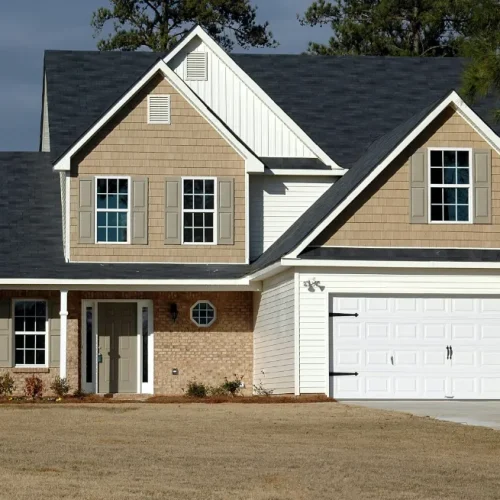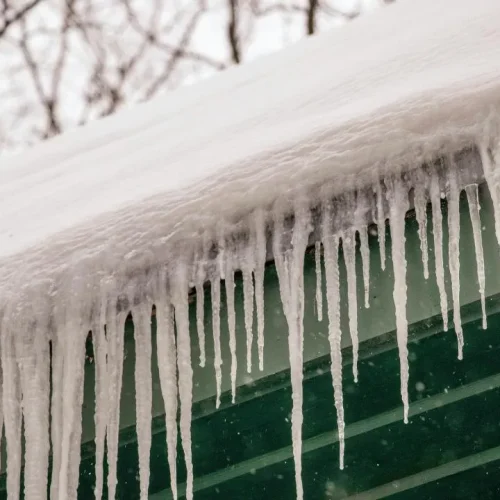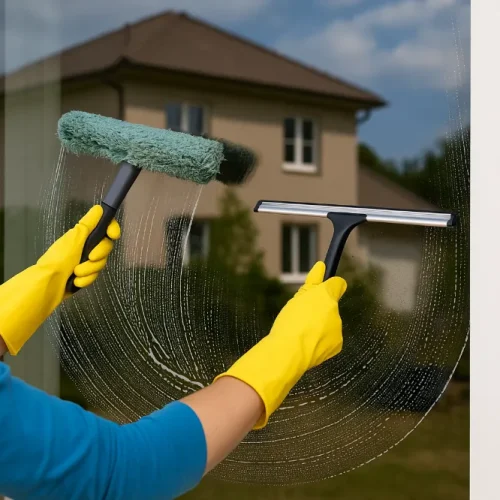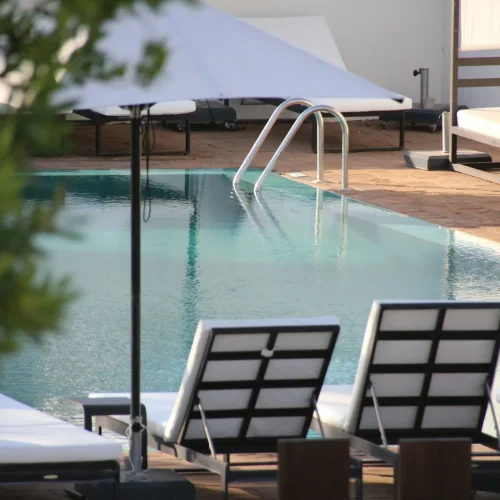
When it comes to landscaping, many homeowners focus on big, eye-catching features such as patios, walkways, or decorative gravel beds. But often, the smaller details are what truly transform an outdoor space from ordinary to polished. One of the most overlooked yet essential elements in landscaping design is the use of edging stones. These simple additions can completely change the way a garden, pathway, or lawn looks and functions.
Defining the Edges
The primary role of edging stones is to create clear boundaries. Without them, flower beds can blend into grassy areas, gravel may spill into walkways, and mulch might scatter onto the lawn after every rainfall. Edging stones neatly separate different zones of the yard, giving each feature a crisp and intentional appearance. This definition not only enhances the visual appeal but also makes outdoor areas feel more structured and well-maintained.
Controlling Materials
Anyone who has spread mulch, gravel, or decorative rock knows how quickly these materials can shift out of place. Over time, this movement can create a messy and uneven look. Edging stones provide a natural barrier that keeps everything contained. Whether it’s holding gravel in a pathway or keeping soil within a raised garden bed, edging helps reduce the need for constant cleanup and reapplication.
Durability and Longevity
Unlike plastic or metal edging materials that can bend, break, or rust over time, natural stone provides a long-lasting solution. Edging stones stand up well against weather changes, lawnmowers, and foot traffic. They can handle freeze-thaw cycles and heavy rains without losing their integrity, which makes them a practical investment for homeowners who want their landscaping to last for years with minimal maintenance.
Aesthetic Versatility
One of the biggest benefits of edging stones is their versatility in design. They come in a wide range of sizes, colors, and textures, making it easy to match them with patios, walkways, or decorative gravel. A curved border of smooth stones can soften the edges of a flower bed, while square-cut stones can bring structure and formality to a pathway. This flexibility allows homeowners and landscapers to get creative with their layouts, whether they’re aiming for a natural, rustic style or a clean, modern look.
Function Meets Style
Beyond aesthetics, edging stones also serve functional purposes. They can prevent erosion by holding soil in place on slopes, guide foot traffic along pathways, and even serve as subtle seating areas if larger stones are used. For those seeking professional help, hiring a Landscaping Service in Farragut, TN can ensure the stones are installed correctly and complement the overall design. By combining style with utility, they play a dual role in enhancing both the appearance and performance of a landscape.
The Finishing Touch
Think of edging stones as the frame around a picture. While the painting itself may be the focal point, the frame provides structure and draws the eye inward. Similarly, edging stones tie together patios, garden beds, and walkways, giving the entire outdoor space a finished, professional look. They’re a detail that may go unnoticed at first glance, but without them, a landscape often feels incomplete.
Types of Edging Stones for Different Landscaping Styles
- Natural Fieldstone – Irregular, organic shapes for a rustic garden look.
- Granite Blocks – Durable, heavy stones with a polished or rough finish.
- Limestone Slabs – Light-toned stones that brighten planting areas.
- Concrete Pavers – Versatile and cost-effective, available in many shapes and colors.
- Brick Edging – Classic and traditional, blends well with older homes.
- River Rock – Smooth, rounded stones for a natural water-side feel.
Step-by-Step Installation Guide for Edging Stones
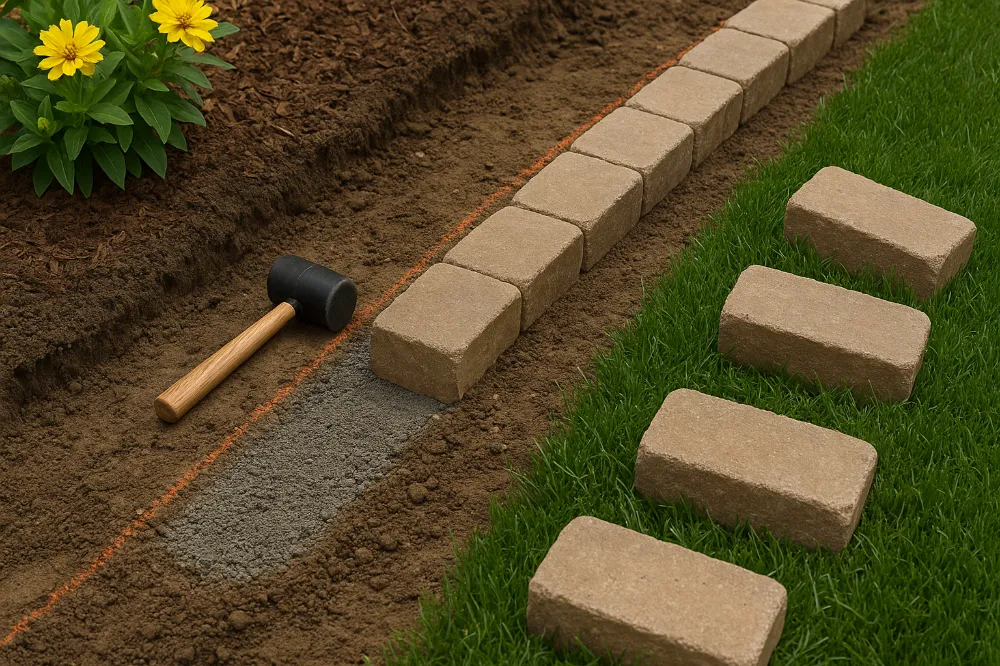
- Plan Your Layout – Outline borders using stakes and string or spray paint.
- Excavate a Trench – Dig 3–6 inches deep and wide enough to fit the stones.
- Add a Base Layer – Fill with compacted sand or gravel for stability.
- Position the Stones – Place them snugly together, tapping with a rubber mallet.
- Backfill and Level – Fill gaps with soil or sand, checking alignment.
- Secure if Needed – Apply landscaping adhesive for loose or sloped areas.
Comparing Edging Stones to Other Border Materials
| Material | Durability | Maintenance | Aesthetic Appeal | Average Cost |
|---|---|---|---|---|
| Edging Stones | Excellent | Low | High | Medium–High |
| Plastic Edging | Low | Medium | Low | Low |
| Metal Edging | High | Medium | Medium | Medium |
| Wood Borders | Low–Medium | High | Medium | Low–Medium |
Creative Ways to Use Edging Stones
- Frame driveways to keep gravel contained.
- Outline water features like ponds or fountains.
- Create tree rings to protect roots and add structure.
- Build low seating walls for gardens or patios.
- Define outdoor kitchen zones for a clean layout.
Maintenance Tips for Edging Stones
- Weed Control – Lay a weed barrier beneath stones to reduce growth.
- Cleaning – Rinse periodically and remove moss or algae buildup.
- Level Checks – Re-align stones that shift after heavy rains or frost.
- Sealant Application – Use stone sealers in harsh climates for added protection.
Cost Ranges for Edging Stones
| Type of Stone | Price Per Linear Foot | Longevity |
|---|---|---|
| Natural Fieldstone | $15–$30 | 20+ years |
| Brick or Concrete | $6–$15 | 15–25 years |
| Cut Granite/Limestone | $25–$50 | 30+ years |
How Edging Stones Can Boost Property Value
- Creates a professional, maintained appearance that attracts buyers.
- Defines landscaping features, making gardens look more intentional.
- Signals quality and durability, which appeals to long-term homeowners.
Plant Pairings That Work Well with Edging Stones
- Low-Growing Perennials – Creeping thyme, sedum, or ajuga.
- Seasonal Flowers – Petunias, pansies, or marigolds.
- Evergreen Borders – Boxwood, dwarf juniper, or holly.
- Ornamental Grasses – Blue fescue, fountain grass, or carex.
Final Thoughts
Landscaping is about more than just planting flowers or laying down gravel—it’s about creating a cohesive design that looks intentional and lasts through the seasons. Edging stones may seem like a small part of the process, but they are vital for defining spaces, protecting materials, and elevating curb appeal. For homeowners and landscapers alike, they are an essential tool for achieving that polished, lasting finish.
FAQs About Edging Stones
Edging stones create clear boundaries in landscaping, helping to separate lawns, flower beds, and pathways.
High-quality edging stones can last decades with minimal maintenance.
Not always—many installations use compacted sand or gravel as a stable base.
They help reduce weed growth, especially when combined with a weed barrier underneath.
Yes, most natural and manufactured stones withstand rain, snow, and temperature changes.
Concrete pavers and bricks are often the most budget-friendly options.
Yes, with proper tools and preparation, edging stone installation can be a DIY project.
Typically, 2–3 inches below ground level to keep them stable and secure.


